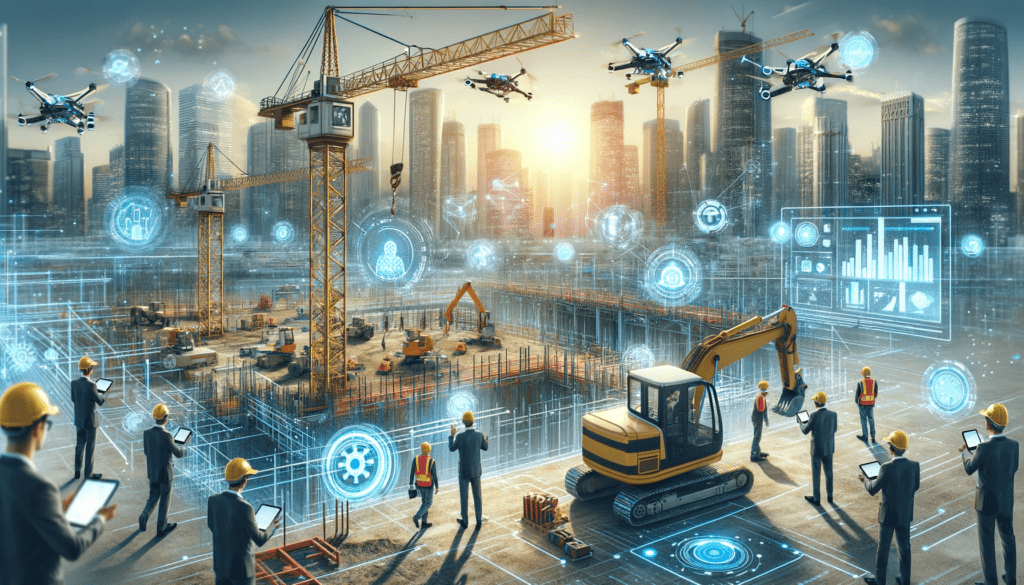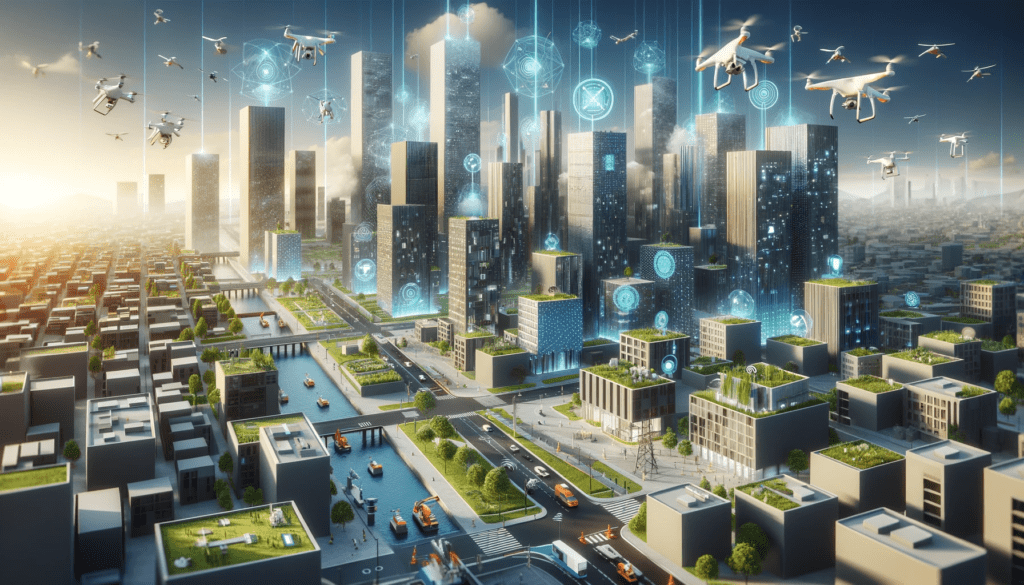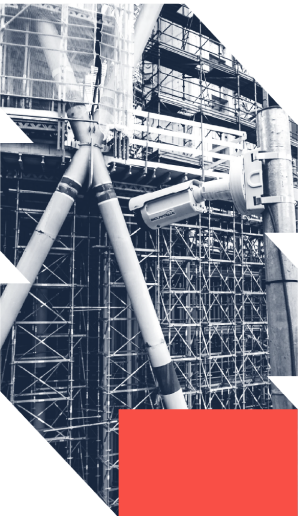AEC Industry Trends and facts in 2023

Like every year, 2023 had predictable events and others that were fascinatingly surprising. AI was the driving force behind innovations that, years ago, were unthinkable in the AEC industry.
The directors and founders of e-verse tell us about these events that marked a turning point and made 2023 a memorable year.
1. AI in the AEC Industry
2023 has marked a watershed moment in the Architecture, Engineering, and Construction (AEC) industry, significantly influenced by the advancements in AI.
Even when our ecosystem is not as advanced as others, there were still great developments in digital products powered by this technology.
This year, several ideas have emerged amidst the fervor and skepticism surrounding AI. Notable among them is the surge in AI applications within the AEC sector, transcending mere hype and demonstrating tangible benefits.
We see many startups playing in the AI image generation space, but we think there are many opportunities to leverage AI paired with BIM data, like asking questions and getting replies with the context of your Revit models or directly performing design actions based on prompts.
The construction industry is undergoing a revolution, fueled by a surge of AEC startups leveraging AI to transform every stage of the project lifecycle.
In design, IrisVR uses AI-powered VR experiences to detect potential code violations and optimize layouts, while Avant Leap introduced ‘Mirar,’ an exploration tool for images, sketches, or models all within a single UI.
Moving on to construction, Mighty Buildings leverages AI-driven design for prefabrication, accelerating project timelines and reducing waste. Meanwhile, StructionSite utilizes AI and machine learning to predict safety hazards on construction sites, promoting a safer work environment.
AI is optimizing the maintenance and operations side of buildings. PredictHQ predicts potential maintenance issues, while PlanRadar’s AI-powered defect tracking software streamlines identification and resolution, ensuring smooth building operation
Key players like Autodesk and Trimble have been at the forefront of this revolution.
The release of “Autodesk AI” was an interesting discovery that integrated design and engineering workflows, fostering continuous innovation. We are closely following its development, which is in full swing.
Similarly, Trimble’s support for AI startups through Trimble Ventures showcases a robust commitment to nurturing AI-driven solutions in AEC.
These steps indicate a significant shift towards AI integration in industry-specific tools and processes.
The broader AI landscape, with projects like Google’s Project Gemini, Meta’s LLaMA-2, and the evolution of GPT-4, has indirectly catalyzed this transformation.
While not AEC-specific, these advancements have provided foundational technologies and inspiration for AEC-focused innovations.
Finally, the emergence of e-verse, as an innovation in the digital ecosystem enriched by AI, arrived not only to automate tasks such as design and structural calculations but also to drive creativity and vision in the AEC industry, making efficient use of AI like never before.
2. AEC works: a launch that strengthens the entrepreneurial ecosystem

AEC Works, an exclusive directory by e-verse, serves as a vital hub for AEC startups, offering them access to essential resources and contacts to accelerate their growth.
Its release was undoubtedly a milestone in our industry because there’s no precedent for any functional tool of this nature capable of providing quick and accurate solutions for the startup community.
This dynamic platform showcases cutting-edge startups transforming the construction technology (Contech) ecosystem with innovative technologies for designing, constructing, and operating buildings and infrastructure.
It’s a comprehensive, user-friendly resource that provides details like company background, services, mission, and vision.
The directory addresses the fragmentation in the AEC startup ecosystem, offering a free, open directory to connect startups globally. AEC works is designed to facilitate networking within the AEC community, helping startups gain visibility with investors and industry leaders.
This initiative stems from an understanding that supporting these startups is key to advancing the AEC industry, especially given the sector’s substantial global economic impact and relatively low productivity growth.
To engage with AEC works, startups are encouraged to add their information to the directory and participate in various initiatives like meetups, podcasts, video series, and collaboration spaces.
Being part of the AEC works community offers startups increased visibility, networking opportunities, learning from industry experts, access to resources, and a chance to contribute significantly to the AEC startup ecosystem’s growth and development.
3. A growing AEC community understanding its needs

Despite technological advancements like OpenAI’s GPT, the construction industry still faces issues like project delays, budget overruns, and a lack of integration between design and construction processes.
Currently, there is a gap between traditional construction management and some modern technology-driven methods from leading construction companies in the industry.
There is still a disconnect between design and constructability, and this gap often results in inefficiencies and delays, particularly in the context of prefabrication companies facing scaling obstacles.
We need closer collaboration between industry stakeholders to bridge this gap and fully leverage the benefits of prefabricated design solutions; this is where great startups like Snaptrude, Hypar, or Testfit, among others, come into place.
Data-driven pre-construction and collaboration still have huge importance for the industry’s success. A shift towards data-driven decision-making and developing software that can capture, organize, and utilize project data effectively.
Collaboration among all stakeholders, including architects, engineers, contractors, and software providers, is essential to drive meaningful change and advance construction productivity. This might sound like something that has been heard for years, but it is still needed today more than ever.
Other 2023 AEC Industry Trends
- Sustainable and Green Building Practices: Increased focus on eco-friendly materials and energy-efficient designs, with an emphasis on reducing carbon footprints and promoting environmental sustainability in construction.
- Advanced Digital Technologies: Adoption of technologies like Building Information Modeling (BIM), 3D printing, and digital twins to enhance design accuracy, project visualization, and construction efficiency.
- Modular and Prefabricated Construction: Rising popularity of prefabricated and modular building components for faster, more cost-effective, and less labor-intensive construction processes.
- Smart Buildings and Automation: Integration of IoT (Internet of Things) and smart technology in buildings for better energy management, enhanced security, and improved overall operational efficiency.
- Augmented and Virtual Reality (AR/VR): Utilization of AR and VR tools for immersive design experiences, enabling better visualization and collaboration during the design phase.
- Emphasis on Resilience and Adaptability: Designing buildings and infrastructure to withstand climate change impacts, natural disasters, and other environmental challenges.
- Focus on Health and Wellness: Incorporating health and wellness aspects into building designs, like improved indoor air quality and natural lighting, to enhance occupant wellbeing.
- Use of Renewable Energy Sources: Integrating renewable energy sources, such as solar and wind power, in building designs to promote sustainability and reduce dependence on non-renewable resources.
In 2023, we’ve played a role in fortifying connections via pioneering product releases, involvement in industry-supporting events, and exploration of potential actions in 2024 to promote the expansion of the AEC community.
e-verse
https://e-verse.comDESIGN PROCESS ACCELERATORS FOR THE AEC INDUSTRY. e-verse's main expertise is to automate, streamline, and connect every stage of the design process, building solutions to help your business grow at a faster pace by leveraging technology. As architects and engineers who code, they transform your design construction requirement into accurate solutions that fit your needs.
